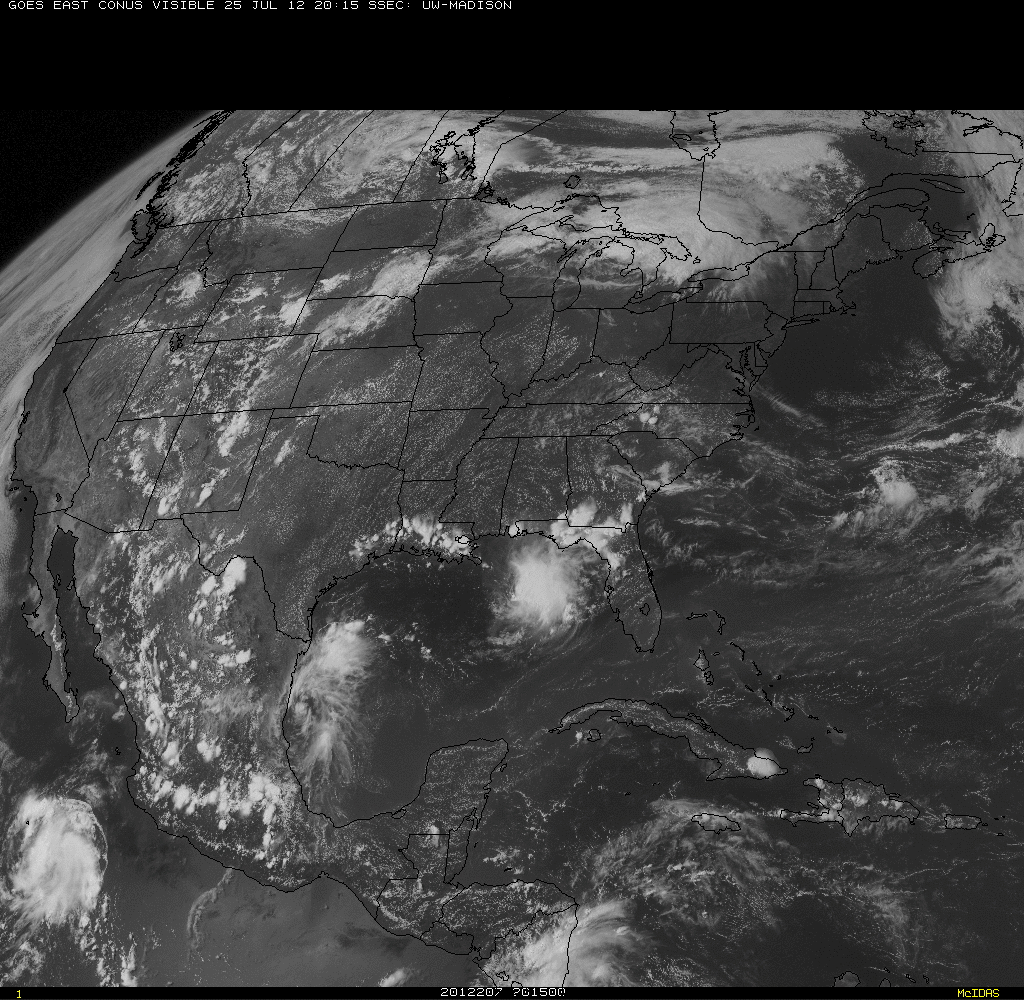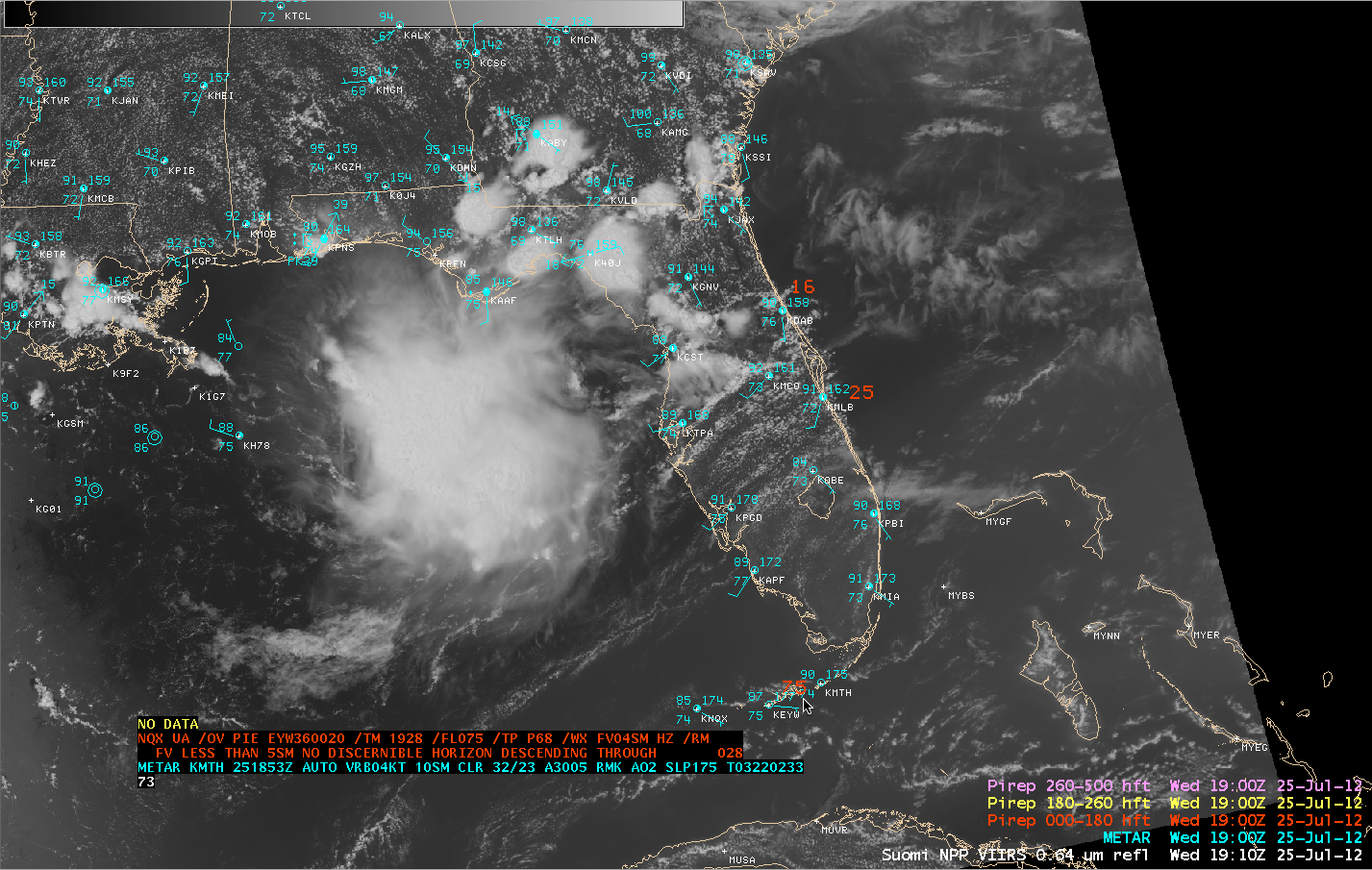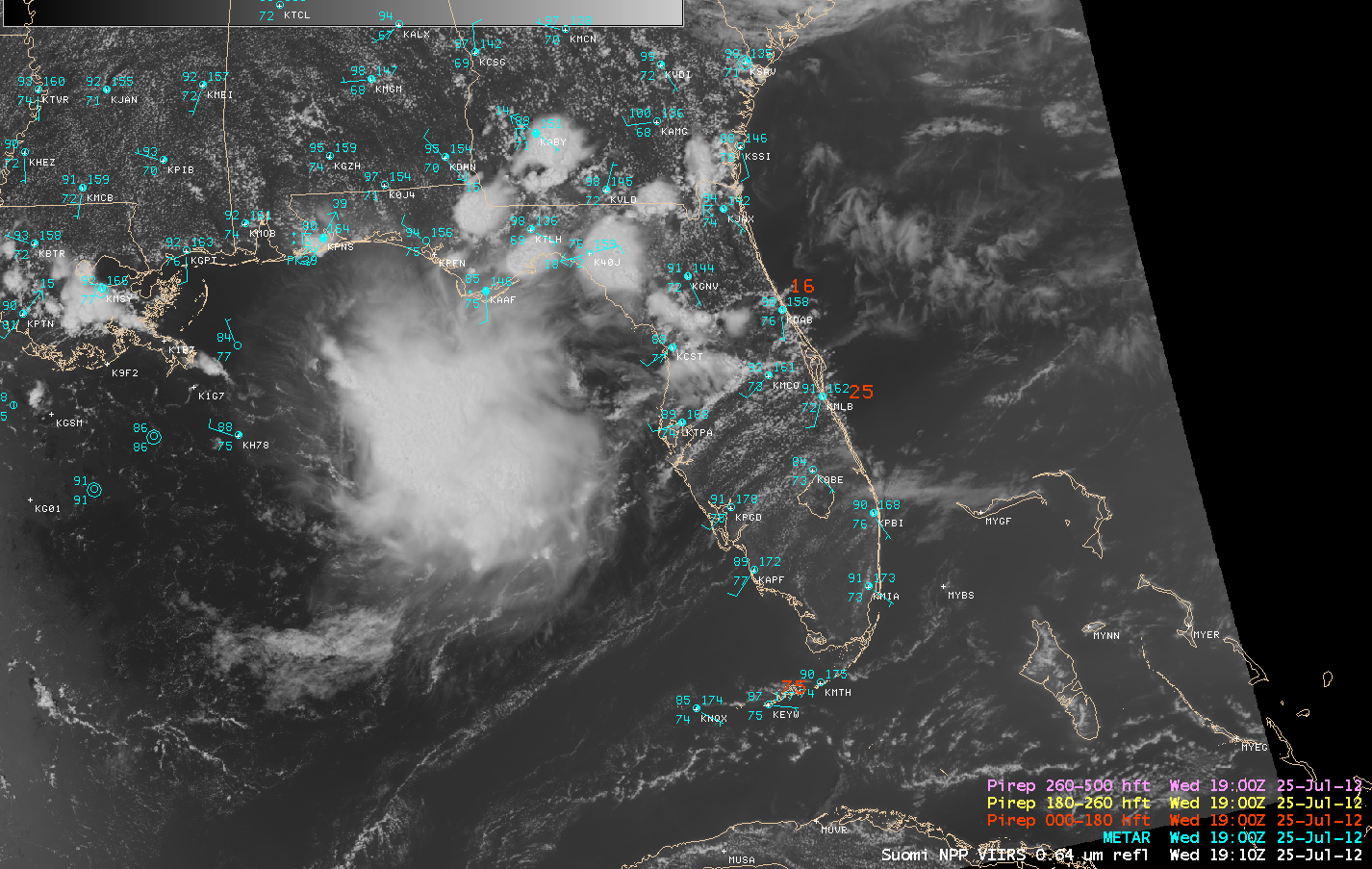Saharan dust over South Florida and the adjacent offshore waters
McIDAS images of GOES-13 0.63 µm visible channel data (above) showed the hazy signature of a dense veil of airborne Saharan dust over South Florida and the adjacent offshore waters of the Gulf of Mexico and the Atlantic Ocean on 25 July 2012. This particular major pulse of Saharan dust began to move westward across the Atlantic Ocean during mid-July.
A closer view using an AWIPS image of Suomi NPP VIIRS 0.64 µm visible channel data (below) also showed the hazy signature of the dust over the southeastern portion of the satellite scene. A pilot reported flight visibility of 4 to 5 statute miles within the dust layer over the Florida Keys.
A comparison of the VIIRS 0.64 µm visible image with the corresponding VIIRS 11.45 µm IR image (below) demonstrated that there was no dust signal at that particular IR wavelength, due to the fact tht an elevated dust layer is generally transparent to thermal radiation from the land and ocean surfaces below.
The VIIRS Aerosol Optical Thickness product (below) showed a strong signal (yellow to red color enhancement) over that region due to the presence of the airborne dust. Yet another strong pulse of Saharan dust could be seen exiting the coast of Africa and moving westward across the Atlantic Ocean,





